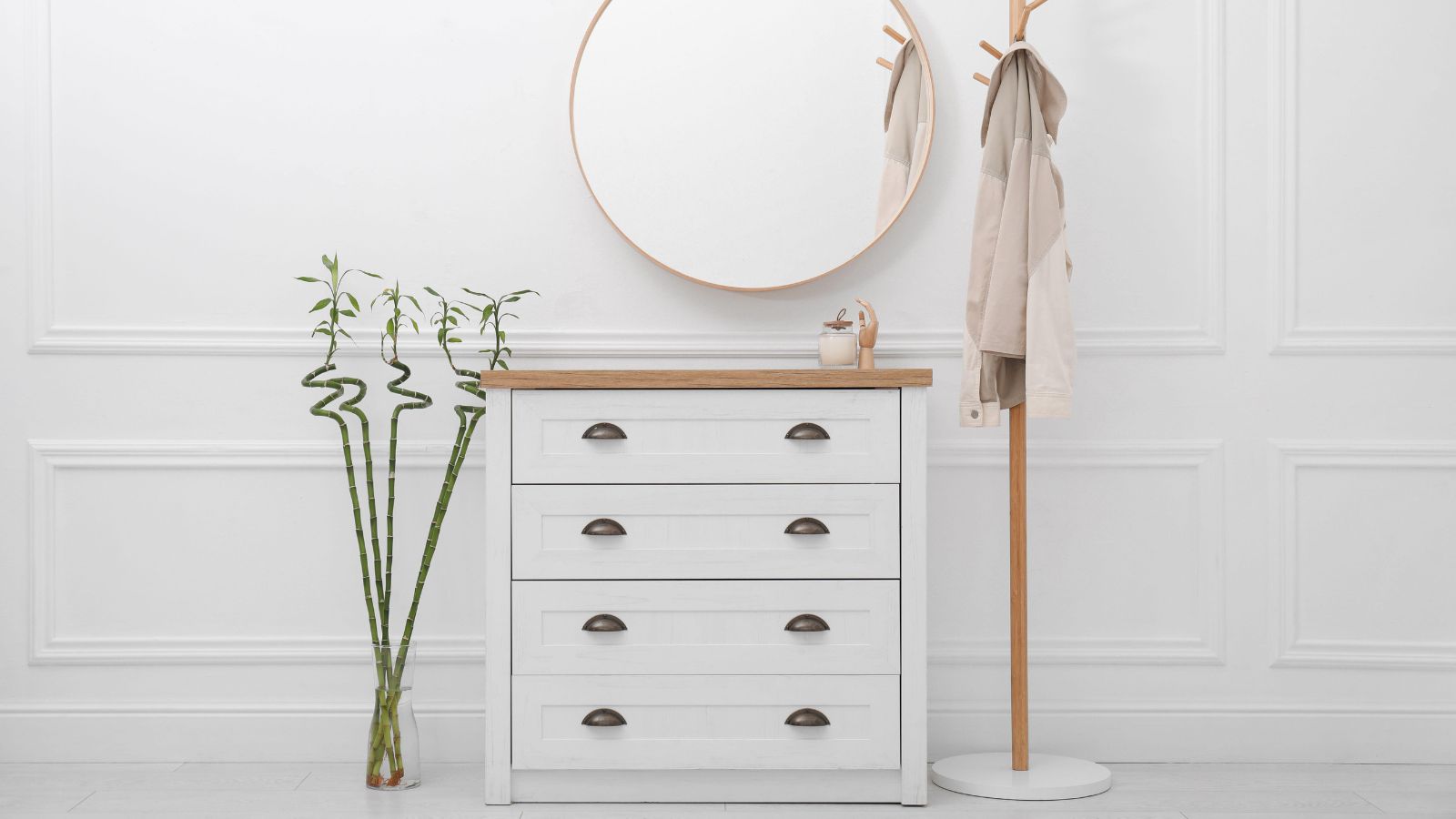
As far as houseplants go, lucky bamboo is one of the most low-maintenance: it tolerates a wide range of growing conditions, making it an excellent choice for beginners and seasoned plant lovers alike. However, to ensure it thrives, there are a few important steps to follow, from proper watering to selecting the right pot or vase.
A somewhat unconventional houseplant, lucky bamboo can be grown not only in soil, but also just as effectively in a simple vase of water. Whether you prefer to grow it in compost or water, we’ll guide you through the best practices to keep it healthy and vibrant.
To ensure your best indoor plants flourish, we've consulted professionals in the field to gather the most reliable tips. Here, they tell you how to grow lucky bamboo and keep it healthy year-round.
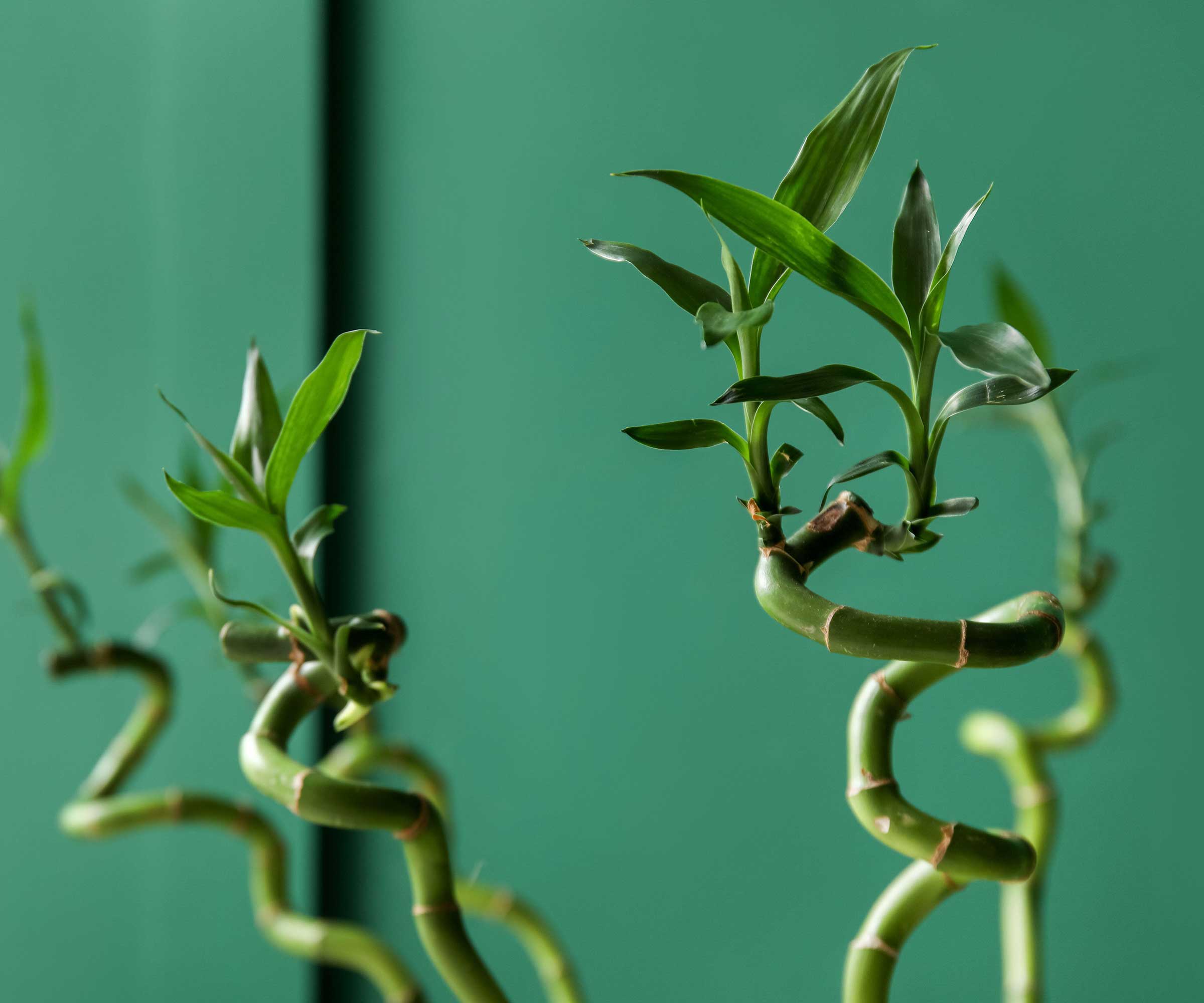
How do you choose healthy lucky bamboo?
When selecting a lucky bamboo, look for a plant with bright green leaves and stalks that are firm and stand upright, as these are signs of a strong, healthy plant. Limp or drooping stalks and discolored (most commonly yellow or brown) leaves and stalks are indicators of poor vitality and should be avoided.
Don't worry if yours begins to look unhealthy – you can always propagate lucky bamboo by cutting healthy sections of the stalk and replanting them to grow new, thriving plants. Here are our seven expert tips for growing lucky bamboo.
Step 1: Select the right container
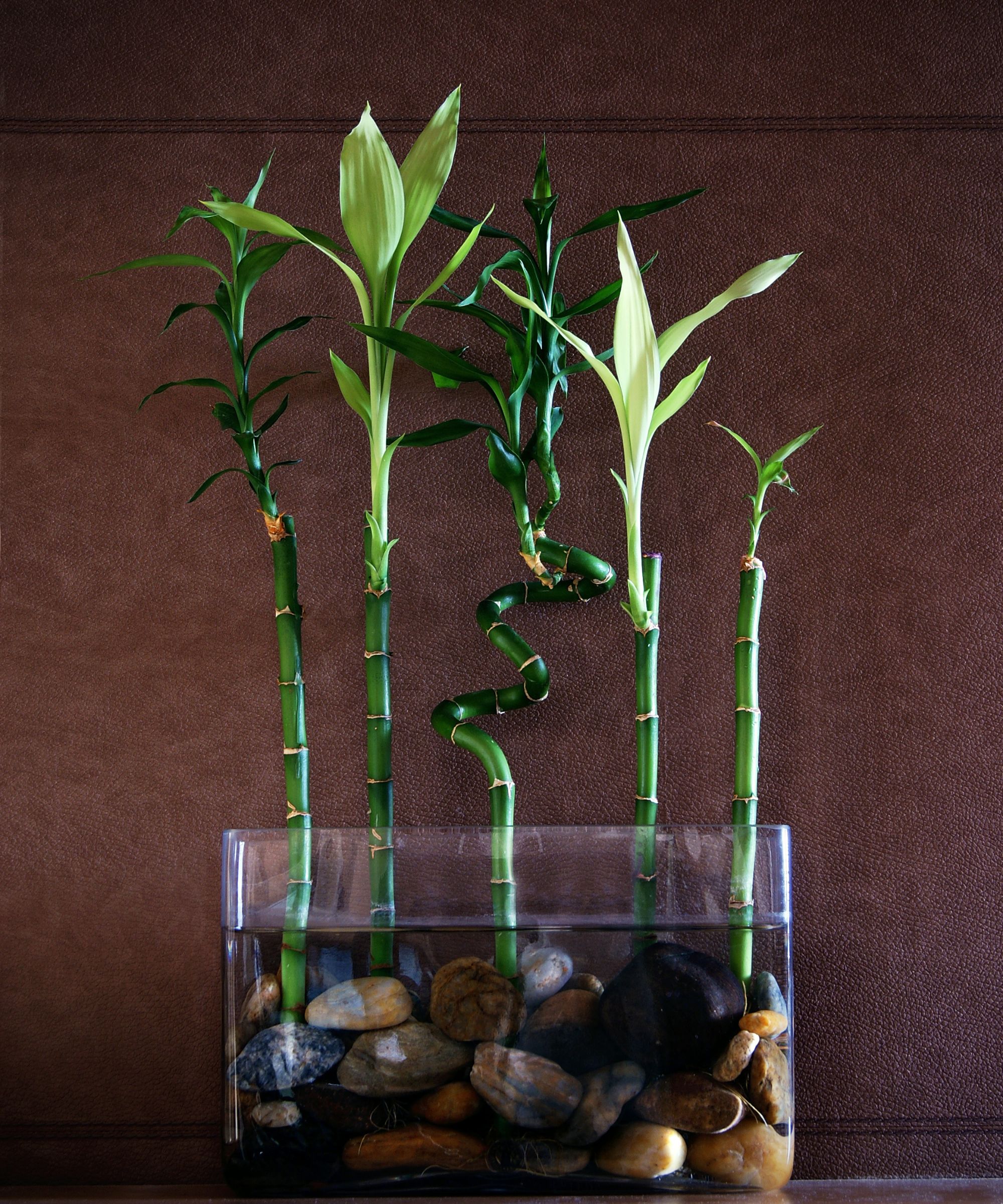
Regardless of whether you’re growing your bamboo in water or soil, you need to choose a vessel that not only provides enough depth and space for root growth, but that will also be sturdy enough to keep the plant balanced, especially as it grows taller and becomes top-heavy.
If you want to learn how to grow lucky bamboo in soil, a ceramic or clay pot with drainage holes is ideal for maintaining proper moisture levels and stability.
If grown in water, use a clear vase to display the lucky bamboo’s roots, ensuring they’re fully submerged while keeping the stalk dry. To reinforce the stability of the vase, considering adding decorative stones or pebbles as an anchor. Besides not allowing the stems to fall, they will make sure the roots do not float but remain submerged. When choosing stones and pebbles, consider the color scheme and design of your space. Wayfair has wide range of vase filler pebbles, including in black, white, jade, brown, and a mix of colors.
Horticulturist at Costa Farms, Justin Hancock adds, ‘In good light, lucky bamboo is relatively fast growing and may need repotting every year or so, or even more frequently, if its lush growth makes it too top heavy for the container you grow it in.' So, once you see the roots crowding in the container, or the plant is becoming unstable, upgrade to a larger vessel, and repot your indoor bamboo.
This planter has a drainage hole at the bottom to prevent waterlogging and root rot, helping to keep your lucky bamboo healthy.
This 20lb bag of natural pebbles can be used for a range of additional purposes, including landscaping, flower arrangements, home decor, and crafts.
If you love decorating with vases but need a practical option to keep your lucky bamboo secure, this fluted decorative vase is the perfect choice, offering plenty of space for the bamboo's roots to grow.
Step 2: Water appropriately
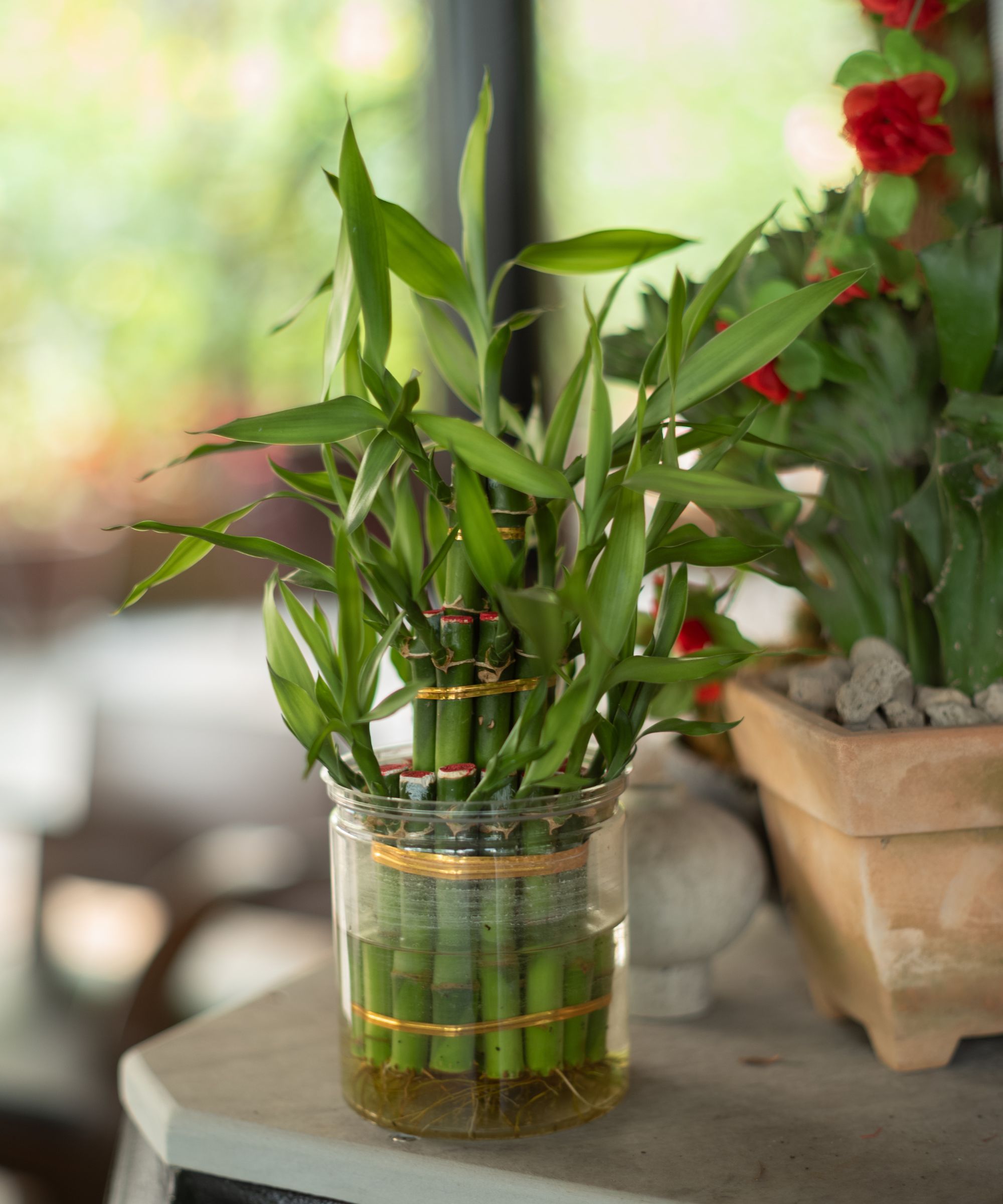
Watering lucky bamboo carefully – especially when it is grown in water – is essential to preventing root rot, avoiding chemical damage from tap water, and ensuring the plant stays hydrated and healthy.
Watering frequency and amount: For soil-grown plants, water them when the top inch of soil feels dry. Be sure to moisten the soil without making it soggy, as overly wet soil can lead to root rot.
For water-grown plants, keep the water level about an inch above the roots at all times to promote healthy root development while preventing rot.
Water quality: Lucky bamboo is highly sensitive to mineral salts, chlorine or fluoride, all of which are commonly found in tap water. If your tap water contains high levels of these substances, it’s best to use filtered or distilled water to prevent leaves yellowing or root damage, ensuring the plant maintains its rich green color.
If levels are low, tap water can be used, but as an extra precaution, leave the water overnight in a different container to let the chlorine evaporate before you transfer it. Or, simply invest in one of the best water filters.
Justin Hancock also recommends: ‘For lucky bamboo grown in water, change the water every seven to 10 days to prevent stagnation of water and bacteria growth.'
Additionally, algae can form in the water, so wash the vase regularly – every month or two – to prevent algae growth’.
Step: Choose the right compost
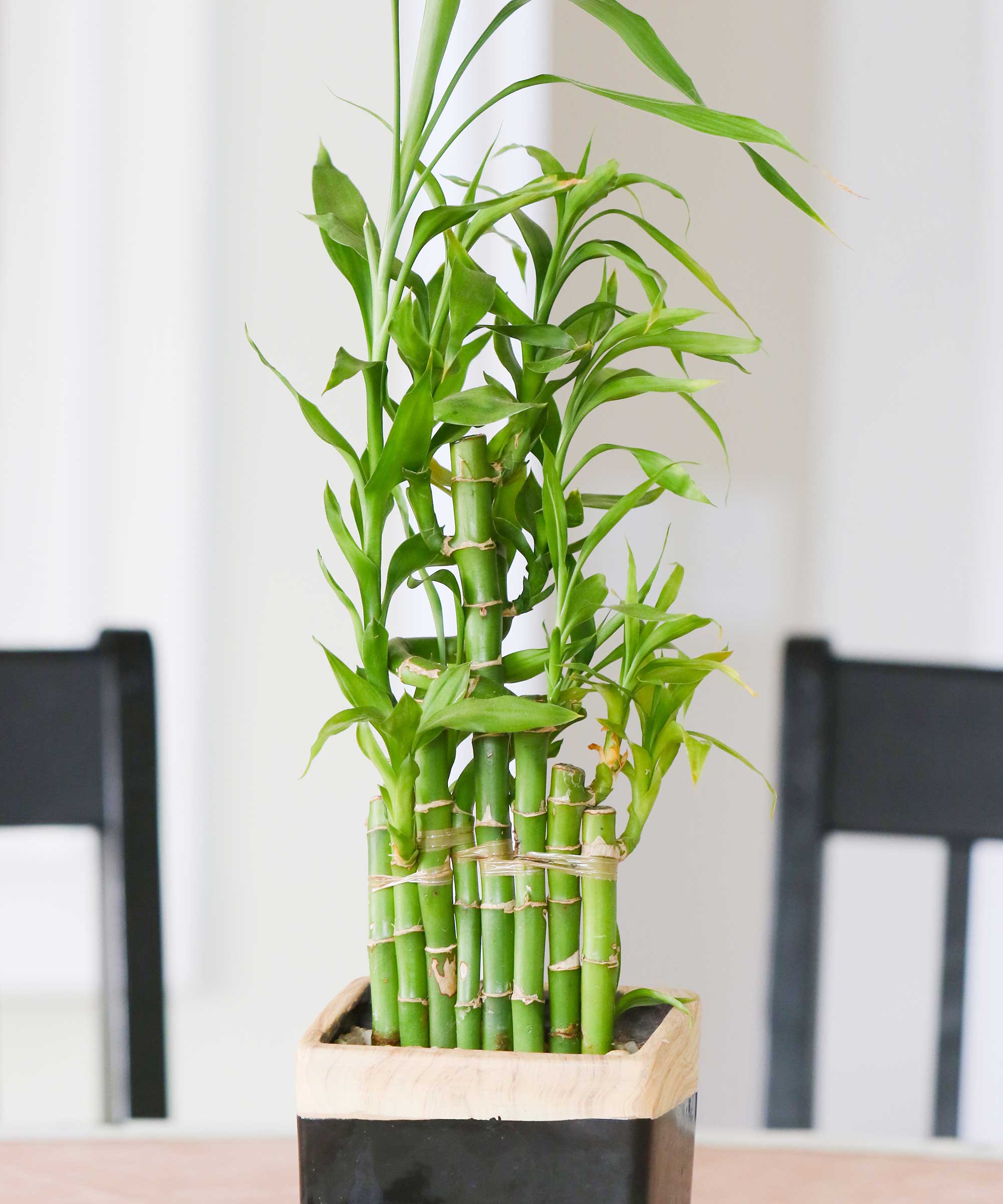
For soil grown lucky bamboo, using the right compost is essential to ensure healthy growth, and make this plant easier to maintain.
Choose a well-draining potting mix to ensure proper drainage. We recommend a peat-free mix with grit or perlite, such as this AeroSoil perlite soil additive, from Amazon.
Step 4: Provide the right amount of light
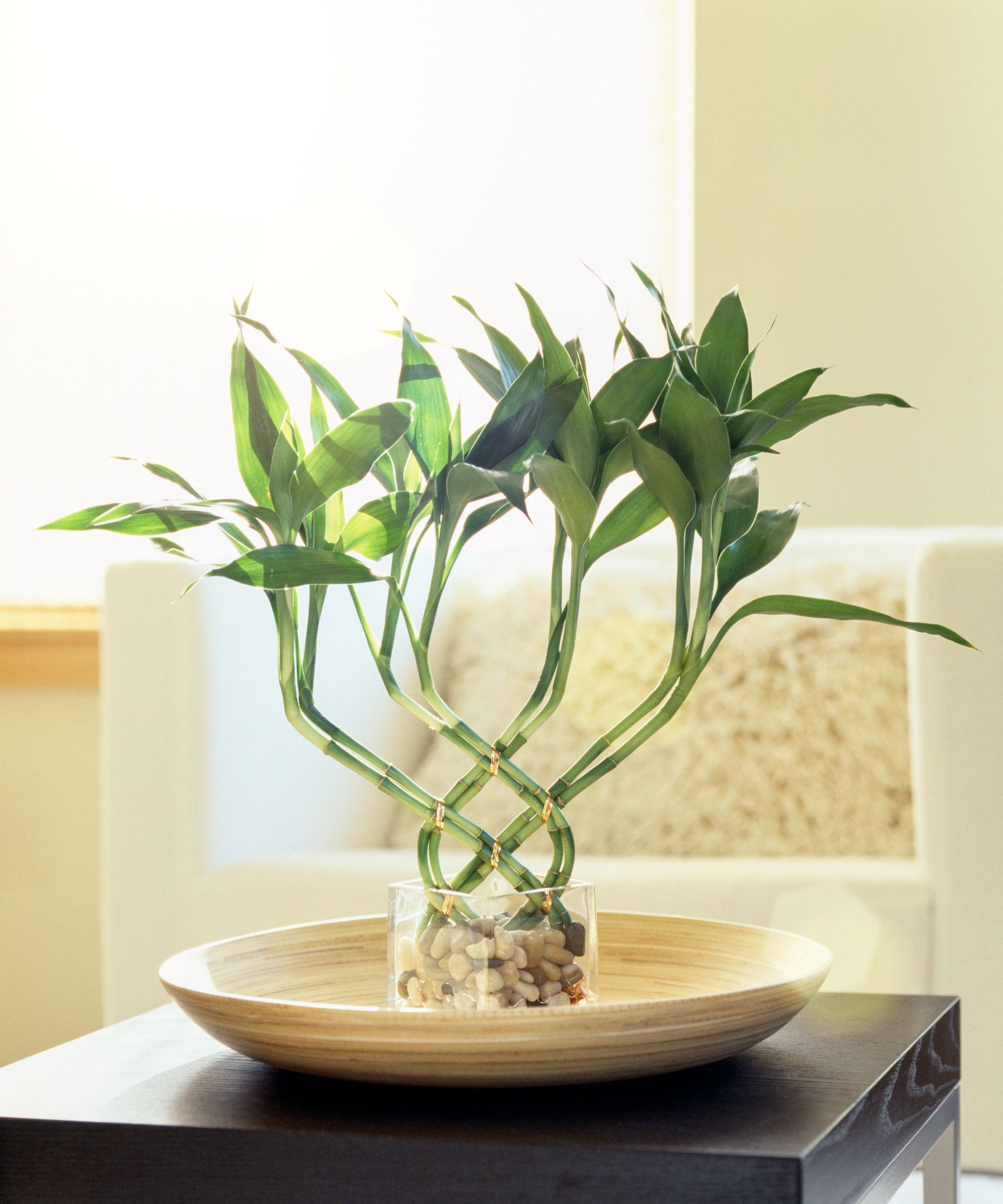
Lucky bamboo is among the few plants that can thrive in low light conditions, though for actual growth, it requires moderate or indirect sunlight. For optimal growth, place your bamboo in a well-lit room, out of direct sunlight, as too much sun can scorch the leaves while too little light will stunt its growth. Filtered light is ideal.
If you're aiming for that signature spiraled growth, gently rotate the plant periodically to ensure even light exposure. Matthew Wilson, CEO of Handy Gardeners explains: ‘All plant species including lucky bamboo have a growth habit whereby they center around light. Therefore, if a plant is confined to one position, it develops a slant. Rotate the plant every week and it will continue to grow towards the light.’
Step 5: Maintain the ideal temperature and humidity
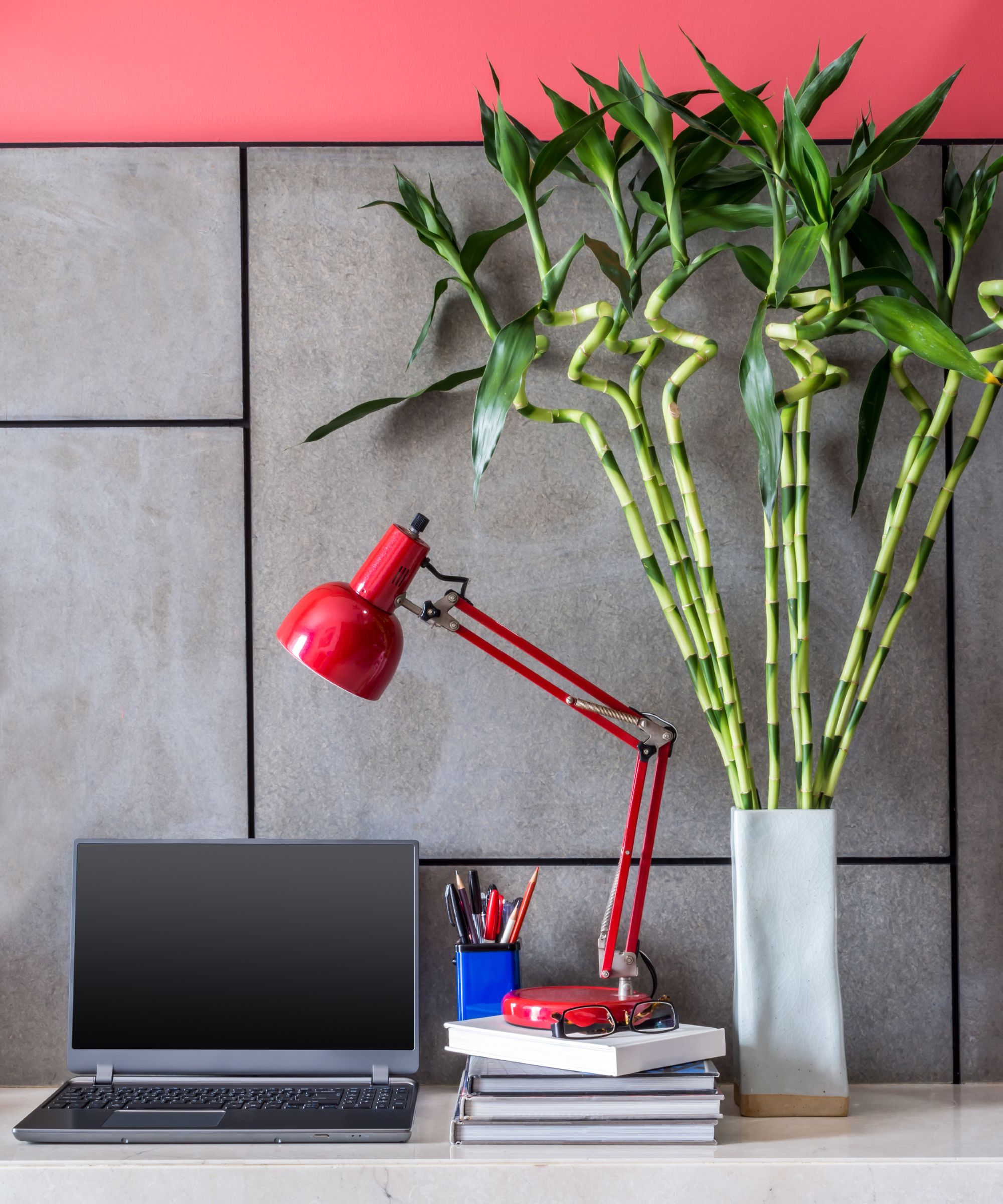
Ideal temperature: For optimal growth for lucky bamboo, maintain an indoor temperature between 65-90℉. ‘Average household temperatures are generally suitable for lucky bamboo; if you're comfortable, the plant likely is too,’ says Justin Hancock.
Lucky bamboo is sensitive to temperature fluctuations, so it's important to keep it in a room with a consistent climate. During colder months, avoid placing the plant near windows or areas with cold drafts.
Ideal humidity: ‘Average to above-average relative humidity levels (over 40 percent) are ideal for the plant as it should prevent it drying out,' advises plant expert, Justin Hancock. 'If you see the stalks start to turn golden-yellow in color, it often means it dried out, and, unfortunately, once the stalks go yellow, it will not recover.'
To maintain the best humidity levels for your home, consider investing in a hygrometer to monitor humidity levels. This can make it easier to adjust your humidity controls when it is out of this range. We recommend these two mini hygrometers, from Amazon.
Occasionally misting the bamboo can also be beneficial, especially in dry conditions. You can use this fine mist spray bottle from Amazon to keep the plant moist.
Step 6: Fertilize once a month

Fertilizing your lucky bamboo plant once a month is a great way to support growth, especially when it is grown in water where the nutrients are limited.
A small amount of fertilizer is usually sufficient – just a drop of liquid plant food or diluted liquid houseplant fertilizer should do the trick. We recommend this liquid fertilizer from Amazon.
Be cautious about how much you use, since adding more than the recommended amount (particularly with synthetic fertilizers) can harm the plant. If your plant is showing signs of distress after fertilization, adjust the concentration or ratio of water to fertilizer accordingly.
Step 7: Prune and propagate
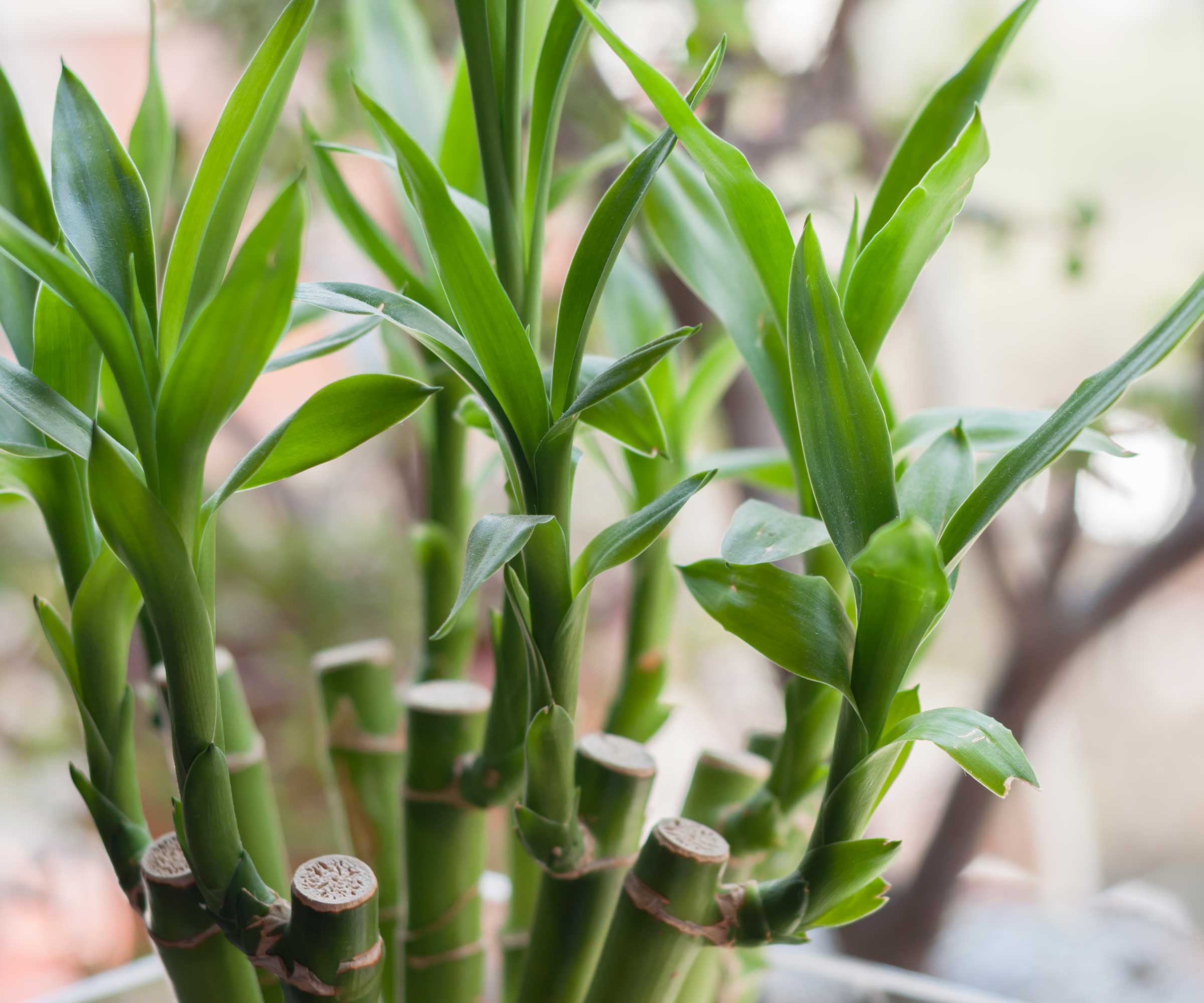
To keep your lucky bamboo healthy and looking its best, regularly remove any yellowing leaves or stems to help the plant focus its energy on healthy growth. You can also prune the tops of the stalks to encourage new shoots. Use sharp, clean scissors to make clean cuts, as this minimizes the risk of infection and ensures faster healing for the plant.
Additionally, houseplant expert at Gardeners Yards, Lydia Beaumont suggests trimming offshoots with sharp scissors to maintain a neat appearance and shape the plant to your liking.
If your lucky bamboo becomes too top-heavy, Justin Hancock recommends propagating to reduce the weight. 'Simply cut off the top few inches of new growth and plant it in moist potting mix or water. The cutting will likely take root and grow into a new plant, making it as easy to share as it is easy to grow.'
FAQs
How can you make lucky bamboo spiral?
Since the stems of lucky bamboo grow in the direction of sunlight, the way to spiral your lucky bamboo is to leverage this. However, it can be tricky to control this outdoors on in rooms with windows on each end. Here’s how to overcome this issue for spiraled growth:
- Cut one side out of a cardboard box that is large enough to contain your lucky bamboo (or any container that can block out light)
- Position the box so the open side faces a light source.
- Place your plant inside the box. The plant starts leaning towards the light on the side where light is allowed in.
- After some growth has occurred, slightly rotate the plant, so the direction in which it grows will continue to will change.
- Keep rotating the plant incrementally and in the same direction. Eventually it will become a spiral.
Here’s a final tip Mathew Wilson recommends to ensure healthy growth of your lucky bamboo plant: ‘Once a month use water that contains cooled green tea diluted with a water ratio and water level of 1:3. This has many antioxidants and minerals which is why it can nourish your plant, ensuring it remains healthy-looking and beautiful.‘







